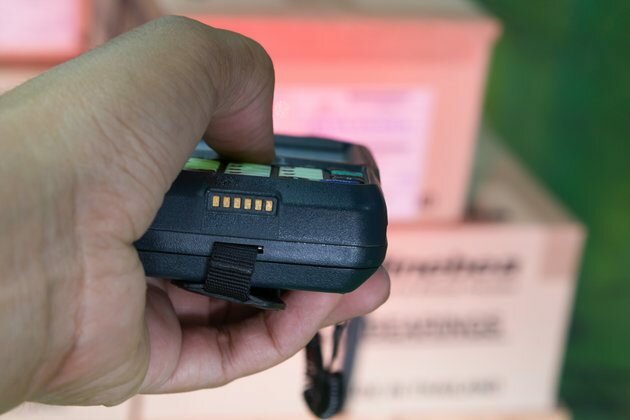How RFID inventory management can reduce costs
10th Apr 2017

When it comes to reducing costs, you don’t need to downsize staff or order in less stock to make a difference. Using RFID to manage your inventory can help you spend less, and save more.
RFID tags and scanners can be used in many ways to great effect. Here at OCS Retail Solutions, we provide RFID solutions to help your business in a number of different ways—inventory management included.
How does RFID work?
As anyone familiar with the technology will already know, RFID stands for Radio Frequency Identification. To use RFID, products need to be fitted with an RFID ‘tag’. This tag will emit a radio frequency that includes information about the product, such as its size, shape, colour, and position.
This technology can be used in a number of different ways. The most common use is in retail, where cashiers remove RFID tags when customers pay for items, and an RFID sensor is fitted at the shop’s exit, which sounds an alarm if an RFID tag passes through. With this setup, RFID can reduce shoplifting.
But that’s not the only way to utilise RFID in your store or warehouse. The unique data that RFID tags can hold makes them perfectly suited for use in inventory management.
How does RFID inventory management work?
RFID tags can tell you all you need to know about a product, item or component—including where it is—allowing you to track it throughout the entire supply chain.
In warehouses, this can be as simple as monitoring the number of products going in and out over time, allowing you to more accurately track the assembly of products from raw materials, and making sure components are always available when you need them.
In retail you can achieve a similar effect by monitoring which products fly off the shelves and which ones stay put for long periods. In-depth data could even tell you what time of year certain products are more popular, and on a much more basic level, it can help you count accurate numbers, giving you sales figures that are not subject to human error. In industries with fast-moving trends, such as the fashion industry, RFID can give you accurate data about what is going in and out of style by tracking which kinds of garments are most popular.
All of these techniques, if configured correctly, will allow you to reduce costs in various ways.
How can RFID inventory management reduce costs?
If you are working with RFID experts like OCS Retail Support, your shelves can be configured to automatically inform you when restocking is needed. This eliminates the need for a member of staff to continuously check store or warehouse shelves themselves, allowing your employees to dedicate more time to other priority areas of the business.
RFID shelf tracking is also faster and more reliable than manual checking by staff. One study in the US found that the retail industry is losing up to $70 billion a year thanks to ineffective supply chain management, with 42% of this coming from products simply not being present on shelves when customers want them. RFID Journal has similar findings, saying out of stock instances cause retailers to lose 8.3% of revenue per year.
The ‘always on’ nature of RFID means your shelves will always be replenished when they need to be, increasing productivity by enabling your team to concentrate on different tasks where their talents are better utilised.
If your RFID tag setup is extremely detailed, indicating size, colour, shape and style, you will be able to get the most thoroughly accurate picture of fashion trends available. This means you can reduce stock orders for items that you know are not as popular, and focus your investment on items you know will sell.
Further back in the supply chain, RFID-tagging a product’s components means you will reduce holdups caused by delays from relevant parts not being available when they are needed, increasing efficiency and cost savings.